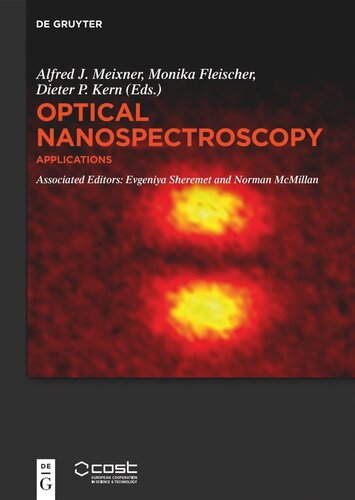

Most ebook files are in PDF format, so you can easily read them using various software such as Foxit Reader or directly on the Google Chrome browser.
Some ebook files are released by publishers in other formats such as .awz, .mobi, .epub, .fb2, etc. You may need to install specific software to read these formats on mobile/PC, such as Calibre.
Please read the tutorial at this link: https://ebookbell.com/faq
We offer FREE conversion to the popular formats you request; however, this may take some time. Therefore, right after payment, please email us, and we will try to provide the service as quickly as possible.
For some exceptional file formats or broken links (if any), please refrain from opening any disputes. Instead, email us first, and we will try to assist within a maximum of 6 hours.
EbookBell Team

4.7
26 reviewsNanospectroscopy addresses the spectroscopy of very small objects down to single molecules or atoms, or high-resolution spectroscopy performed on regions much smaller than the wavelength of light, revealing their local optical, electronic and chemical properties. This work highlights modern examples where optical nanospectroscopy is exploited in photonics, optical sensing, medicine, or state-of-the-art applications in material, chemical and biological sciences. Examples include the use of nanospectroscopy in such varied fields as quantum emitters, dyes and two-dimensional materials, on solar cells, radiation imaging detectors, biosensors and sensors for explosives, in biomolecular and cancer detection, food science, and cultural heritage studies.
Also by the editors: Textbook "Optical Nanospectroscopy":
_"Fundamentals & Methods" (Vol. 1) and
_"Instrumentation, Simulation & Materials" (Vol. 2).